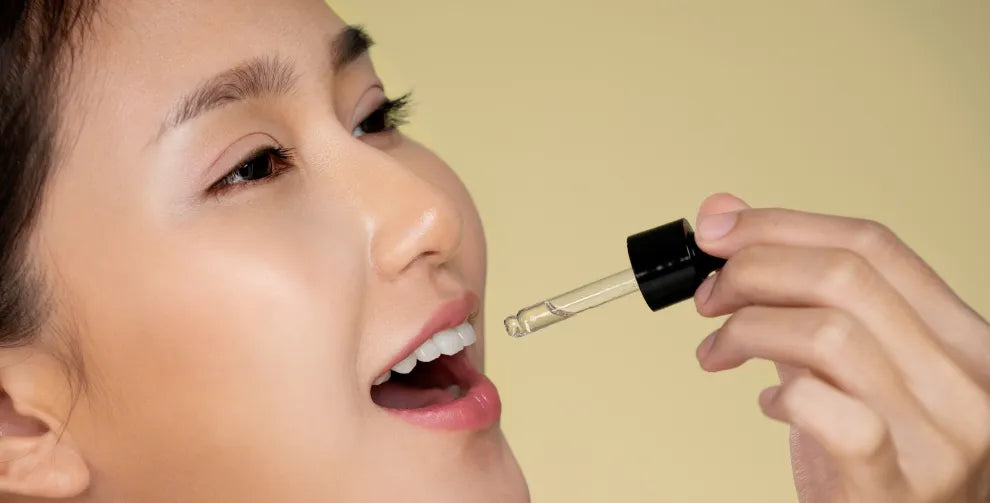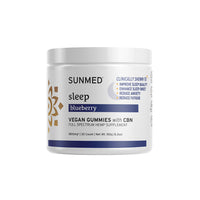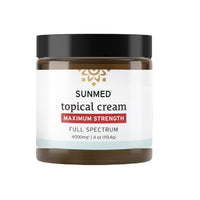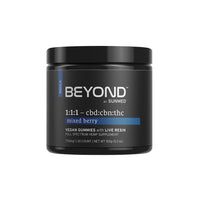CBD bioavailability: Everything to know

Medically Reviewed by: Dr. Caley Scott, ND
Cannabidiol (CBD) has surged in popularity thanks to its wide range of potential benefits without the psychoactive effects associated with its cousin, tetrahydrocannabinol (THC).
As CBD finds its way into a wide array of products — from CBD oils and tinctures to topical creams — understanding how effectively the body can use or absorb this compound becomes more important than ever. This concept is known as "bioavailability," and it significantly impacts the effectiveness of CBD in therapeutic applications.
This article dives into CBD bioavailability, explaining why it matters, how it varies with different methods of consumption, and what consumers can do to make the most of their CBD products. Whether you're a CBD novice or a seasoned user, comprehending bioavailability will enhance your ability to use CBD more effectively and safely.
What does bioavailability mean?
Bioavailability is a critical concept in pharmacology that refers to the proportion of a substance that enters the circulatory system and is able to have an active effect.
It determines the dosage required for a drug to be effective and influences the overall efficacy of the drug once administered. In the context of CBD, understanding bioavailability is essential because it affects how much CBD must be consumed to achieve desired therapeutic effects.
What factors influence bioavailability?
There are a few key factors that impact bioavailability, and knowing these factors can help you make the most of your CBD. Here’s what to know:
1. Absorption rate
The rate at which CBD is absorbed into the bloodstream can significantly affect its bioavailability. This rate varies depending on the method of administration.
For example, CBD absorbed through the lungs (via inhalation) enters the bloodstream rapidly, whereas CBD consumed orally might take longer due to slower digestion and metabolism processes.
2. Metabolism
Once CBD is absorbed, it undergoes metabolism in the liver, a process known as first-pass metabolism.
During this process, the concentration of CBD can be significantly reduced before it reaches systemic circulation. This reduction means that not all of the ingested CBD becomes available for therapeutic action. The extent of this metabolism can vary greatly depending on the form in which CBD is consumed.
3. Formulation of the product
The specific formulation of a CBD product also influences its bioavailability.
Factors such as whether CBD is in oil form, encapsulated, or used as an emulsion can impact how easily it is absorbed. Carrier oils, for example, can enhance absorption rates by increasing solubility or bypassing certain metabolic pathways.
4. Individual differences
Individual physiological factors such as age, body composition, diet, and overall health can affect how CBD is metabolized and absorbed. Personal differences in liver function, gastrointestinal health, and blood flow can all influence the bioavailability of CBD.
Understanding these factors is essential for making informed decisions about CBD consumption. By knowing how bioavailability varies with different methods of administration and individual physiological conditions, users can better tailor their CBD use to fit their specific needs, potentially enhancing the therapeutic outcomes.
Do different forms of CBD have different bioavailability?
CBD can be administered through various routes, each affecting its bioavailability differently. Understanding these methods can help users choose the most effective form of CBD for their needs.
Oral consumption
Oral methods, such as capsules, edibles, and beverages, are among the most common ways to consume CBD. They are user-friendly and familiar, but they tend to have lower bioavailability compared to other methods.
First-pass metabolism
When CBD is ingested orally, it must pass through the digestive system and then the liver, where it undergoes first-pass metabolism. This process significantly reduces the amount of CBD that enters the bloodstream, with bioavailability typically ranging from 6% to 15%.
Sublingual administration
Sublingual administration involves placing CBD oil or tinctures under the tongue, allowing it to be absorbed directly into the bloodstream through the mucous membranes in the mouth. This method bypasses the digestive system and first-pass metabolism.
This method can increase bioavailability to around 20-35%. It also allows for faster onset of effects, as the CBD enters the circulation more quickly than it does with oral ingestion.
For maximum absorption, the user should hold the CBD solution under the tongue for 60-90 seconds before swallowing.
Inhalation
Inhalation through smoking or vaping offers the highest bioavailability of all consumption methods.
By inhaling CBD, it enters the lungs and diffuses directly into the bloodstream, bypassing the liver and digestive tract entirely. This route can provide bioavailability rates of about 31% to 56%, allowing for almost immediate effects.
While effective, inhalation can pose respiratory risks, and the long-term effects of vaping are still under investigation.
Topical application
Topical products, such as creams and balms, are applied directly to the skin. This method is designed for localized effects rather than systemic effects.
Topicals are ideal for targeted areas, particularly for relief from discomfort or tension. Bioavailability is generally not a concern here as the goal is not systemic absorption. The effectiveness of topicals can depend on the product's formulation and the permeability of the skin area where it is applied.
Each of these methods offers different benefits and levels of bioavailability. Consumers should consider their health goals, desired onset time of effects, and convenience when choosing the method of CBD consumption. To get started with topical CBD, browse our selection of CBD topicals including creams, roll-ons, massage oils, and more.
How to enhance CBD bioavailability
Maximizing the bioavailability of CBD is key to enhancing its therapeutic effects. Improving CBD absorption can lead to more efficient and cost-effective usage. Here are some strategies and considerations for enhancing the bioavailability of CBD.
Carrier Oils and Absorption
CBD is often infused in carrier oils, which can significantly influence its bioavailability. Oils such as coconut oil, olive oil, and hemp seed oil contain fatty acids that can help dissolve CBD, allowing it to be more readily absorbed by the body. Medium-chain triglycerides (MCT) oil, commonly derived from coconut oil, is particularly effective as a carrier due to its rapid metabolism and absorption.
Advanced Formulations
These advanced formulation technologies reduce the size of CBD molecules, creating an emulsion that can be absorbed more efficiently by the body. Nanoemulsions can significantly increase the surface area of the CBD, improving its solubility and absorption.
Our lineup of water-soluble CBD features advanced nanoemulsions for easy mixing and unmatched bioavailability, giving you an easy path to daily wellness in your favorite beverages. This cutting-edge approach offers a great entry point to try CBD for the first time or enhance your current routine with more flexible delivery methods and quick, reliable benefits.
Another sophisticated delivery method involves encapsulating CBD within liposomes. This method protects the CBD as it passes through the digestive system, allowing more of it to reach the bloodstream and target tissues.
Dietary Considerations
Taking CBD with certain types of food can enhance its bioavailability. Foods high in fatty acids can increase the absorption of CBD, making after-meal administration potentially more effective.
Certain substances, like caffeine or alcohol, can affect how the liver metabolizes CBD, potentially reducing its effectiveness.
How does CBD bioavailability impact its effects?
Understanding the bioavailability of CBD is crucial not only for consumers but also for clinical settings where precision in dosage and effectiveness is key.
Let’s explore how the variability in CBD bioavailability impacts clinical outcomes and informs dosage considerations.
Impact on therapeutic efficacy
The variability in bioavailability among different administration methods poses challenges in dosing precision. In clinical practices, determining the most effective serving that achieves desired therapeutic effects without causing side effects is crucial.
Due to lower bioavailability, especially with oral consumption, higher serving sizes may be necessary, which can increase both the cost and potential side effects.
Research and studies
Ongoing studies that examine the bioavailability of different CBD formulations and their impact on various medical conditions are refining dosage guidelines and improving formulation designs to maximize therapeutic benefits.
As more data become available, medical professionals can make more informed decisions about which CBD products to recommend, based on scientific evidence of their bioavailability and efficacy.
Considerations for medical professionals
Medical professionals must take into account individual patient factors such as metabolic rate, existing health conditions, and concurrent medication use, all of which can influence CBD metabolism and bioavailability.
Due to the complexity of CBD bioavailability and its clinical implications, it is essential for healthcare providers to educate patients about the most effective methods of administration and the importance of adhering to prescribed regimens. Additionally, clinicians must be aware of the regulatory status and quality of CBD products, as these greatly affect the product’s safety and bioavailability.
Recommending third-party tested products from reputable manufacturers is crucial to ensure patient safety. At Sunmed, we understand the importance of knowing exactly what you're putting into your body, which is why we ensure that all our products undergo rigorous third-party testing.
This process verifies the purity, potency, and quality of our CBD offerings. By providing accessible test results, we commit to transparency, allowing you to make informed decisions about your health and wellness journey.
The bottom line
In this exploration of CBD bioavailability, we have uncovered the intricacies of how CBD is absorbed into the body and the significant impact this has on its therapeutic efficacy.
From the basic understanding of what bioavailability means to the nuances of different administration methods, it is clear that the effectiveness of CBD is not merely about the amount consumed but also about how it is consumed.
We discussed how oral consumption, while popular, offers lower bioavailability compared to other methods like sublingual administration or inhalation, which provide quicker and more efficient absorption into the bloodstream. Advances in CBD formulations, such as nanoemulsions and liposomes, present promising methods to enhance bioavailability and, consequently, the therapeutic potential of CBD.
Furthermore, the clinical implications of bioavailability are profound. Medical professionals must consider bioavailability when prescribing CBD, tailoring their recommendations to individual patient needs and the specifics of CBD metabolism and absorption. This understanding helps ensure that patients receive the maximum benefit from CBD treatments, with servings that are both safe and effective.
Shop Sunmed for high-quality CBD products you can count on.
Sources:
Bioavailability of bioactive food compounds: a challenging journey to bioefficacy | NIH
Mechanisms of Action and Pharmacokinetics of Cannabis | NIH
The Effects of Food on Cannabidiol Bioaccessibility | NIH
Clinicians’ Guide to Cannabidiol and Hemp Oils | Mayo Clinic Proceedings













